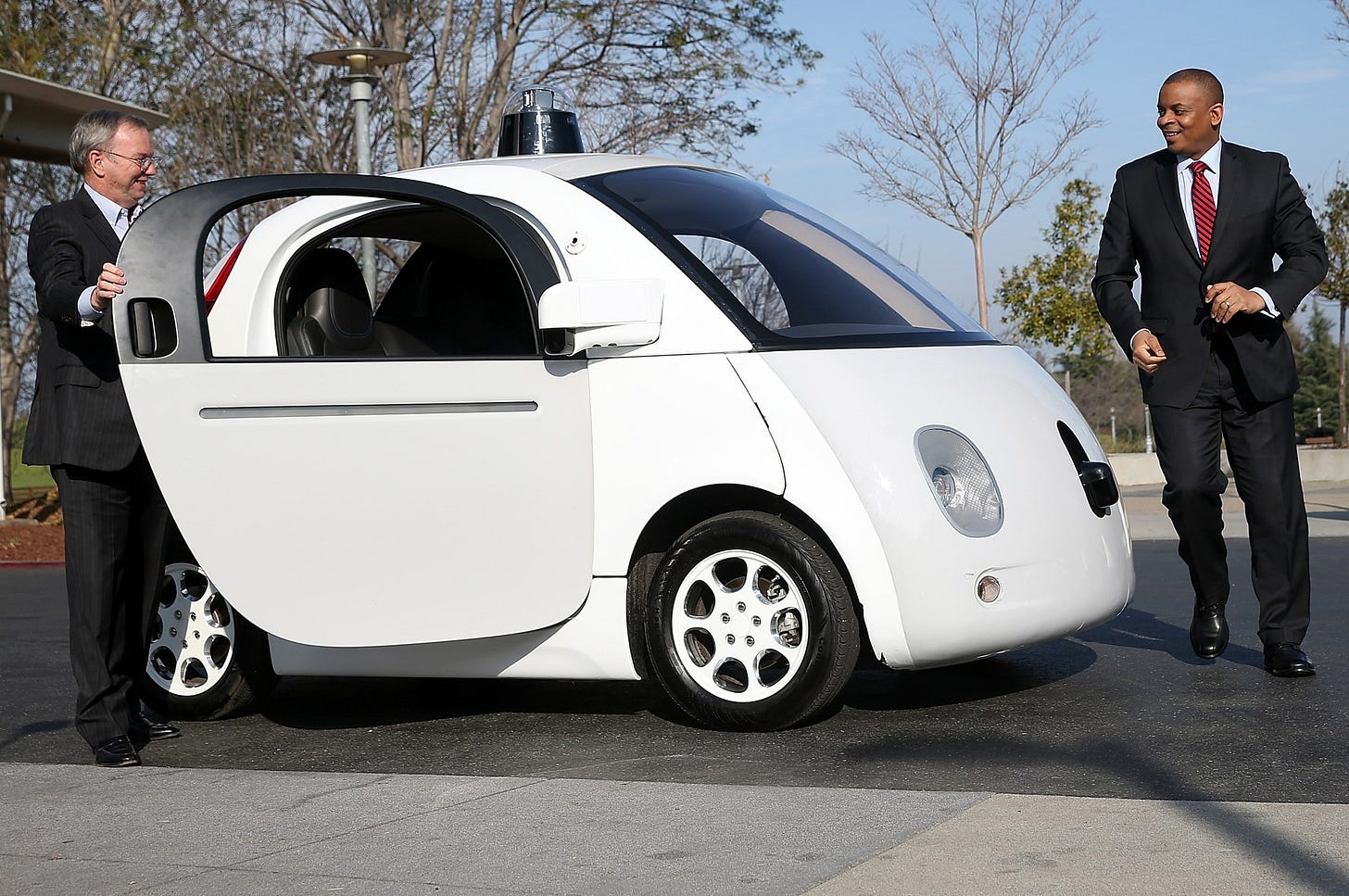Following the Talent
GEX's Autonomous Vehicle (AV) Talent Thesis
Let’s begin with a status check:
June 2025 may go down as the month when autonomous vehicles (AVs) finally crossed the psychological chasm from “promising tech demo” to “everyday infrastructure.”
Waymo’s Multi-City Reality: The company is quietly expanding fully driver-out service in four additional metros and growing its coverage in existing ones, pushing its annualized run-rate to >400 million robotaxi miles. Even San Francisco’s new mayor, Daniel Lurie, hailed a Waymo on Market Street and livestreamed the ride.
Tesla’s First Self-Delivering Car: A Model Y rolled off Gigafactory Texas, drove 30 minutes on public roads, and parked in its new owner’s driveway—no human intervention, first insurance-approved autonomous delivery ever.
“Self-driving will surely win over human driving—better experience, lower cost, infinite scale.”
Vinod Khosla on X
The trajectory is clear. Just as smartphones transformed from luxury gadgets to essential infrastructure in less than two decades, AVs will become a daily reality by 2040. The same psychological shift that made us forget how we navigated cities before Google Maps will happen with autonomous transportation.
From AVs to GenAI
AVs were the first commercial arena that demanded all of AI’s pieces: perception, prediction, planning, high-performance computing, advanced software tooling and hardware integration that needs to be safe and work flawlessly 24/7. That pressure forged several breakthroughs that now power today’s broader AI boom:
Perception at the edge: billions of annotated camera, lidar, and radar frames built the world’s largest real-world vision datasets, forcing innovation in neural-network compression, low-latency inference, and specialized silicon.
Synthetic data & large-scale simulation: AV teams pioneered photorealistic simulators to generate rare or dangerous scenarios safely, a technique now standard for robotics and embodied AI which is now extending to “world modelling”.
Continuous learning in the wild: maintaining a fleet taught engineers how to collect, label, and re-train models on petabytes of fresh data every day, laying the blueprint for modern MLOps.
Regulation & safety: nobody faced a tougher regulatory and liability bar than companies putting 4,000-pound robots on public roads. The resulting processes of safety cases, formal verification, redundancy engineering are becoming the gold standard for any AI product.
AV Talent
One of the most remarkable outcomes of the AV revolution is the caliber of talent it has cultivated. Because AVs sat at AI’s bleeding edge, they magnetized elite engineers, roboticists, and product builders. The decade-plus commercialization slog, full of dead-ends, opaque regulations, and brutal capital cycles, left this cohort with hard-won judgment and plenty of scars. Now, as the industry matures, many of these leaders are channeling that experience into fresh challenges, becoming founders, investors, and builders:
Founder-to-Founder Transitions: Cruise Automation founder Kyle Vogt is already applying AV know-how to humanoid robots, raising $150 M on day one .
Investor Migration: AV alumni are launching venture funds and backing the next generation of ambitious startups. GEX is actively investing in these funds, such as LMNT Ventures (founded by a core Uber ATG member) and Reasons to be Optimistic (led by Oliver Cameron, founder of Voyage).
Cross-Pollination: The skills and mindset honed in AV to solve complex, high-stakes problems at scale are now being applied to cognitive AI and beyond.
For GEX, the investment thesis is clear: follow the talent. Whether these AV veterans become founders of the next breakthrough companies or investors backing the next generation of entrepreneurs, their involvement signals opportunities worth pursuing.
I’ll leave you with some background material. For a definitive insider history, pick up Autonomy: The Quest to Build the Driverless Car—And How It Will Reshape Our World by Lawrence D. Burns, former GM R&D chief and early Waymo adviser. The book traces the field from the DARPA Grand Challenge through the 2016 stampede into commercial development, profiling the maverick engineers and unlikely thinkers who pushed the technology forward. If you’d rather watch than read, Burns distills the same story in a lively, hour-long Talks at Google session.
This is an educational post about GEX Ventures investments. It is for informational purposes only and may not be relied on as legal, tax, securities or investment advice and does not constitute an offer to buy or sell interest in any products offered by us or others. Email me at mk@gex.vc or leave a comment if you’d like to exchange ideas.


